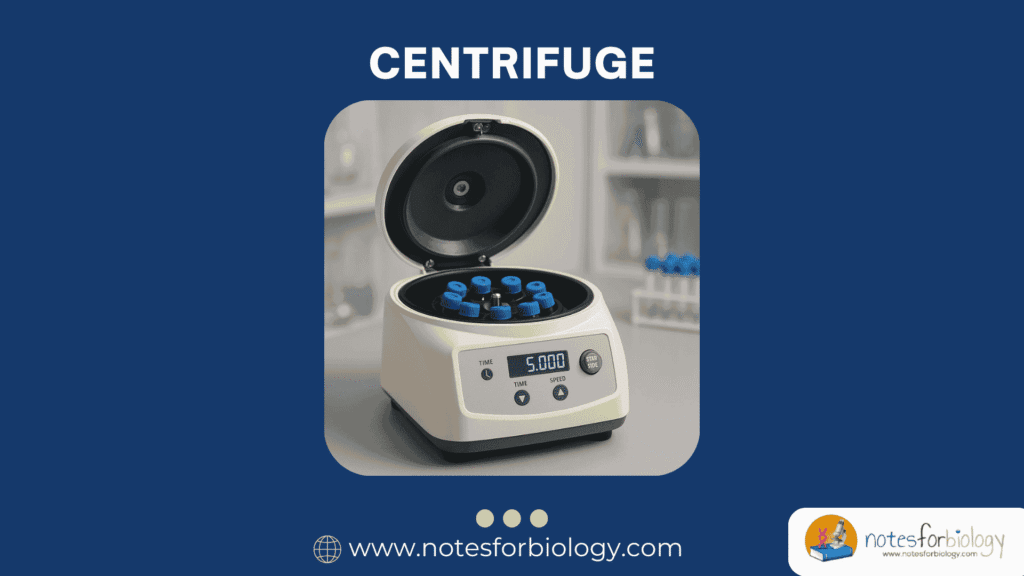A centrifuge is a tool used to divide mixture components according to their size, density, rotor speed, and medium viscosity. In laboratories, they are frequently used to separate biological components from crude extracts.
Table of Contents
There are various types of centrifuges. They are as follows:
Types of Centrifuges:
1. Benchtop or Tabletop Centrifuges:
It is a small, versatile often used in medical and scientific fields.
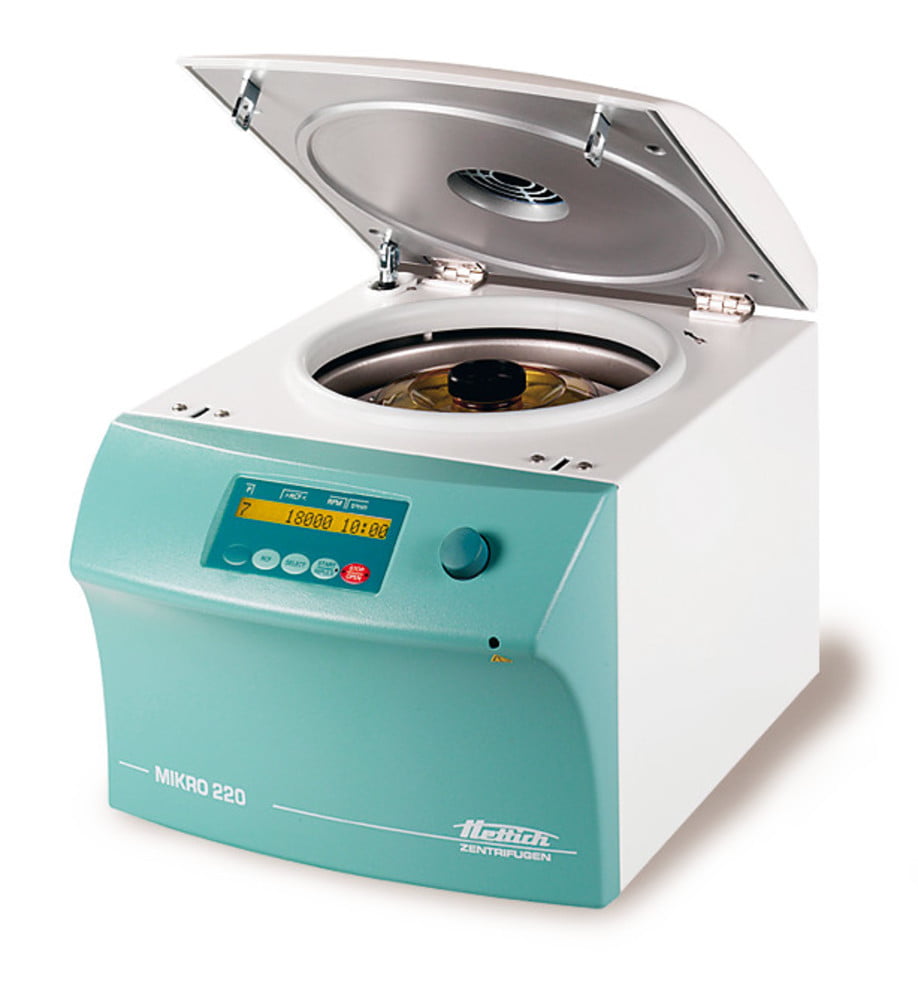
Principle:
Centrifugal force is the basis for how this principle works. The denser components of a sample in a tube travel outward and toward the bottom of the tube when it is turned at high speeds , while the less dense components stay closer to the top.
Uses:
- Blood Separation
- Cell Harvesting
- Microbiology
2. Microcentrifuge:
It is a specific type of benchtop centrifuge intended for samples with a volume of no more than 0.2 to 2.0 milliliters
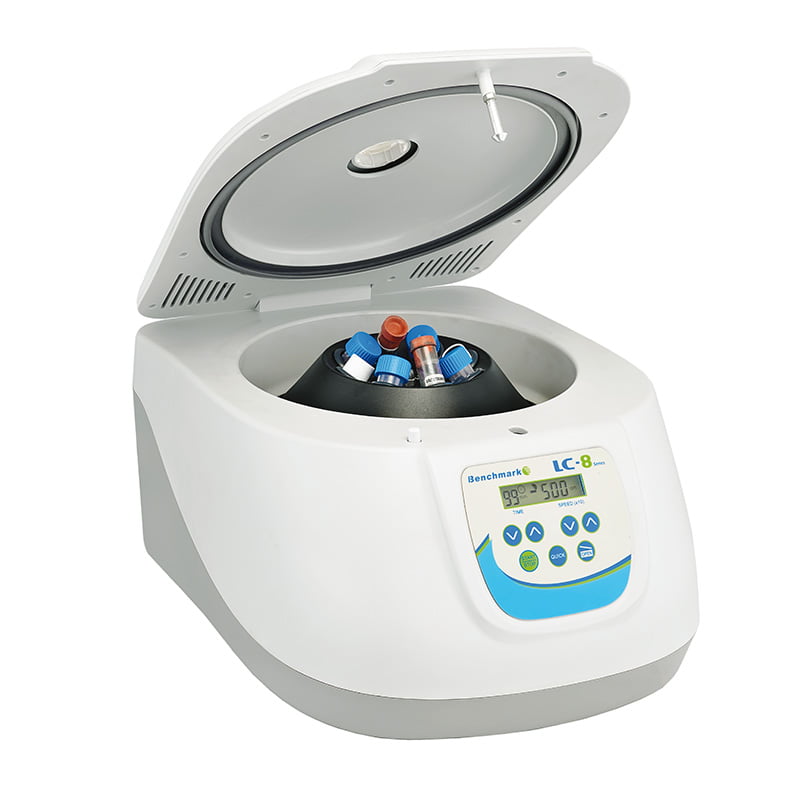
Principle:
It works on the same fundamental idea as other. It separates mixture components according to their densities using force. High-speed spinning of the sample causes less dense particles to stay closer to the top and denser particles to travel outward to the tube’s bottom.
Uses:
- DNA and RNA Isolation
- Particle Separation
- Analytical Research
3. High-Speed Centrifuge:
It is a type of laboratory equipment that can spin at up to 20,000 RPM, which is faster than ordinary benchtop rates.
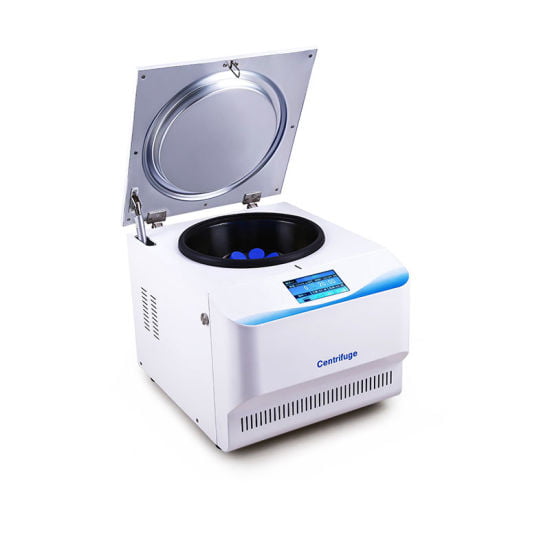
Principle:
Centrifugal force is the basis for how it works. Particles in a sample travel outward and away from the axis of rotation as it is turned at high speeds. Denser particles go faster towards the bottom of the tube and less dense particles stay closer to the top as a result of this force, which divides the particles according to their densities.
Uses:
- Cell fractionation
- Virus Isolation
- Purification of Nucleic Acids
4. Ultracentrifuge:
It is a high-speed centrifuge with extremely high forces that is used to separate different-density particles.
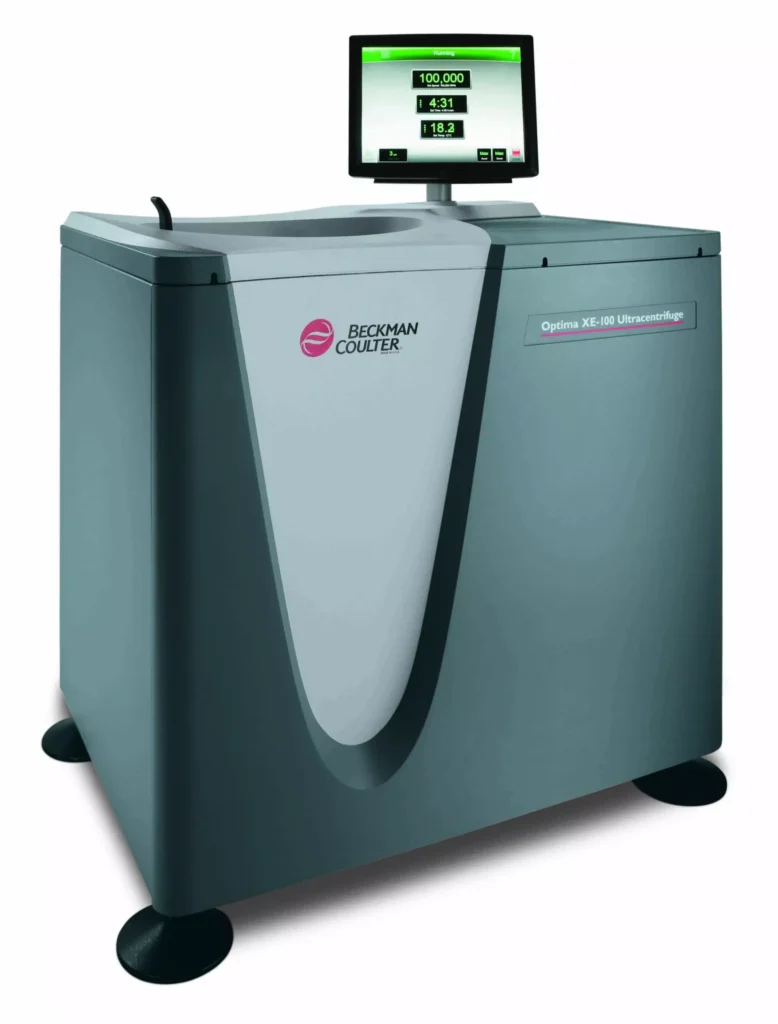
Principle:
Like conventional , it runs on the principle of centrifugal force, but at significantly faster speeds. As a result, there are much higher forces produced, frequently more than 100,000 x g.
Uses:
- Enzyme Isolation
- Nanoparticle Separation
- Virus Purification
5. Refrigerated Centrifuge:
It is a sophisticated lab tool for accurate density-based sample separation
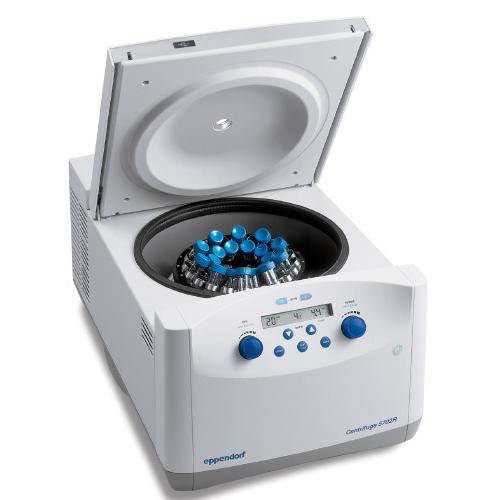
Principle:
The same basic principles regulate how it works as other, but it also has the capacity to regulate temperature. During the process, this feature is essential for preserving the integrity of biological and chemical samples that are sensitive to temperature changes.
Uses:
- Blood Component Separation
- Preparing diagnostic samples
- Microorganism Isolation
6. Continuous Flow Centrifuge:
It is a specialized type designed to process huge amounts of liquids constantly as opposed to in discrete batches.
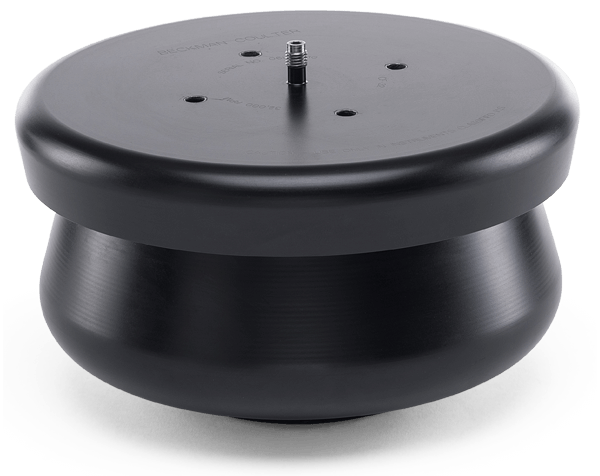
Principle:
It uses force to separate particles from a liquid according to their density. This method of operation is similar to that of others. It is different, though, because it can process higher volumes over longer periods of time.
Uses:
- Cell Harvesting
- Dairy Processing
- Water and Oil Separation
7. Differential Centrifuge:
In cell biology and biochemistry, it is a widely used technique for separating cellular components according to their size and density.
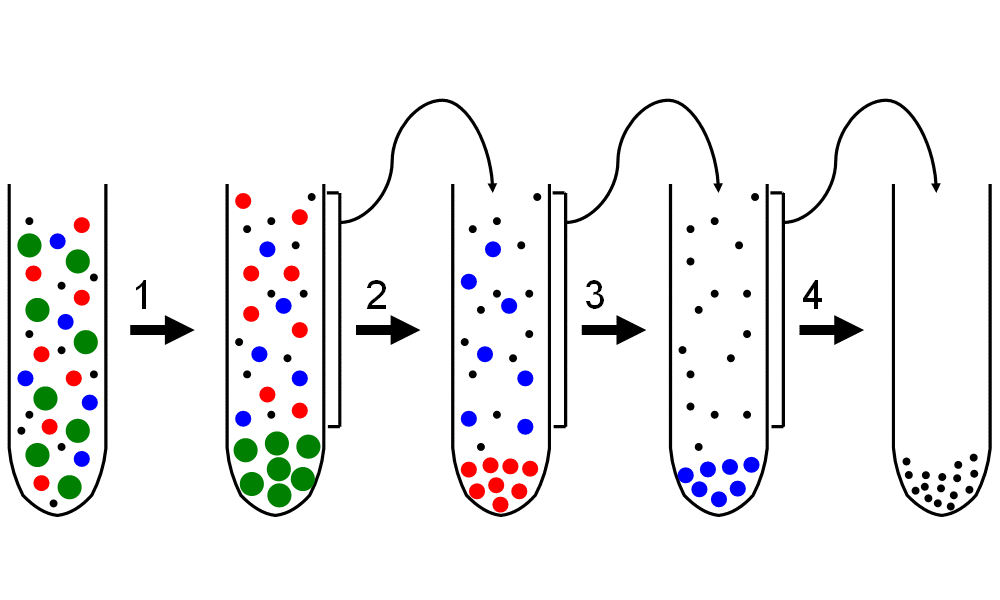
Principles:
Centrifugal force is used in this principle to separate suspended particles in a liquid. Particles of varying densities and sizes settle at various speeds when a sample is centrifuged.
Uses:
- Research on Cell Biology
- Purification of Nucleic Acids
- Protein Clarification
8. Density Gradient Centrifuge:
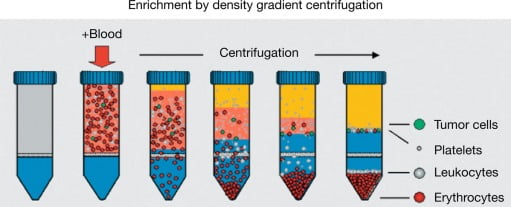
It is a technique that allows the separation of particles based on their size, shape, and density.
Principles:
Creating a gradient of densities inside a tube is the process of this principle. Particles in a sample spun over this gradient travel until their density equals that of the surrounding medium, thereby dividing according to buoyant density.
Uses:
- Isolation of Cells and Organelles
- Protein Purification
- Virus Purification
9. Isopycnic Centrifuge:
It’s process , sometimes referred to as equilibrium density gradient , is used to separate particles only based on density.
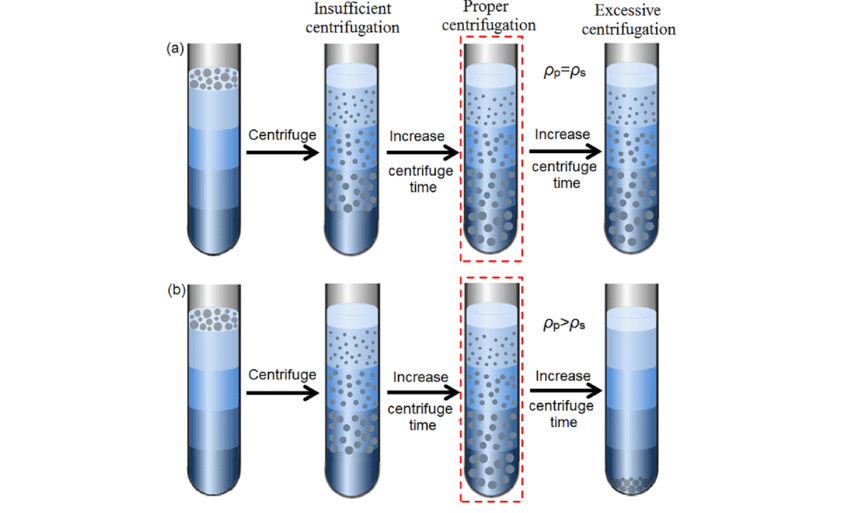
Principles:
The buoyant density of particles forms the basis of this principle. Particles travel through the gradient under the influence of force until they arrive at a place where their density matches that of the gradient medium.
Uses:
- Isolation of Subcellular Organelles
- Nucleic Acid Separation
- Virus Purification
10. Analytical Centrifuge:
It is a specialized laboratory instrument used for the analysis of macromolecules, particles, and particles in solution.
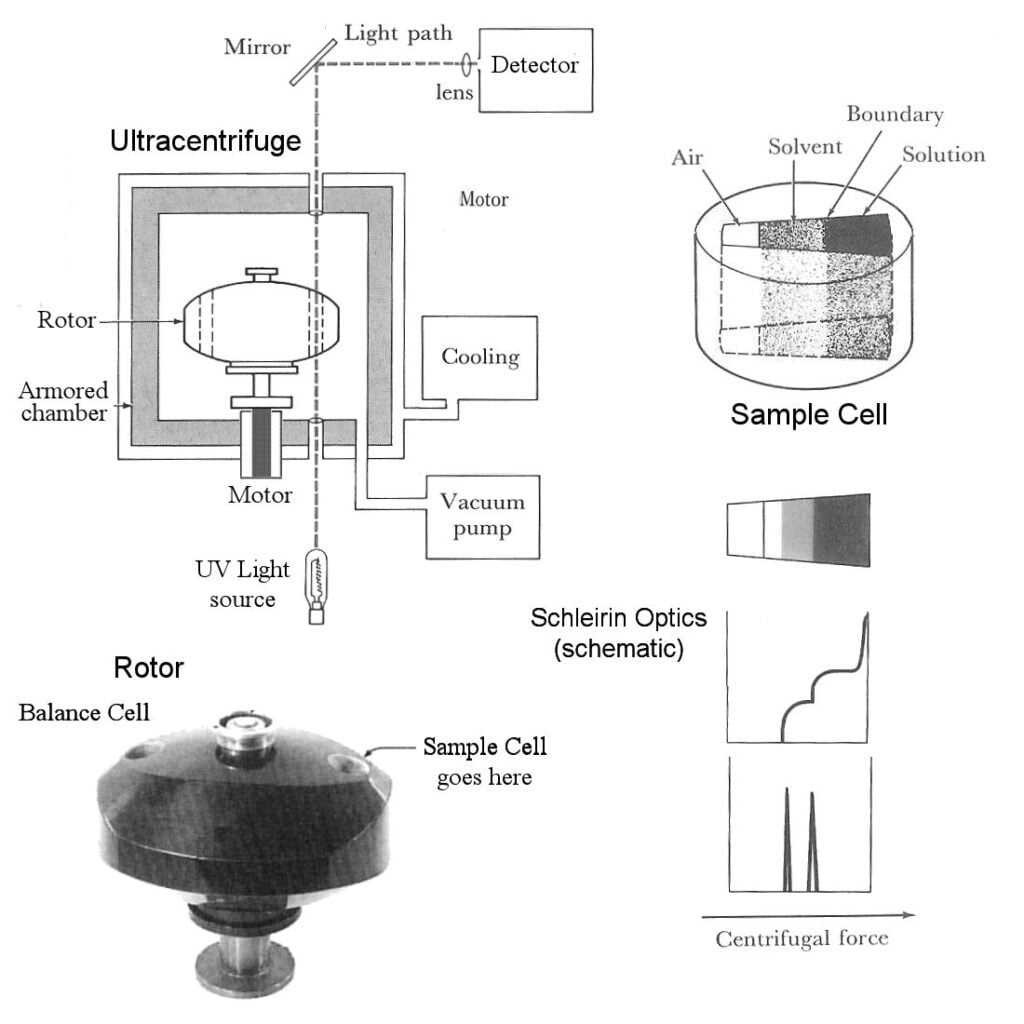
Principles:
Particles in a sample are separated by this principle according to their sedimentation velocity or sedimentation coefficient, which is determined by the mass and shape of the particle.
Uses:
- Analysis of Nucleic Acids
- Analysis of Particles and Colloids
- Polymer analysis and biopolymers
In addition:
Centrifuges are devices used to separate components of a mixture based on their density by spinning them at high speeds. Different types of centrifuges are designed for various applications in scientific, medical, and industrial fields.
FREQUENTLY ASKED QUESTIONS(FAQ)
What is a centrifuge and how does it work?
A centrifuge is a machine used in laboratories to separate substances according to how dense they are.
What are the different types of centrifuges and their applications?
There are several different kinds of centrifuges, such as ultracentrifuges, high-speed centrifuges, tabletop centrifuges, and microcentrifuges. They are utilized for activities like viral concentration, protein purification, cell separation, and DNA isolation in research, clinical diagnostics, biotechnology, and other industries.
Related Articles:


